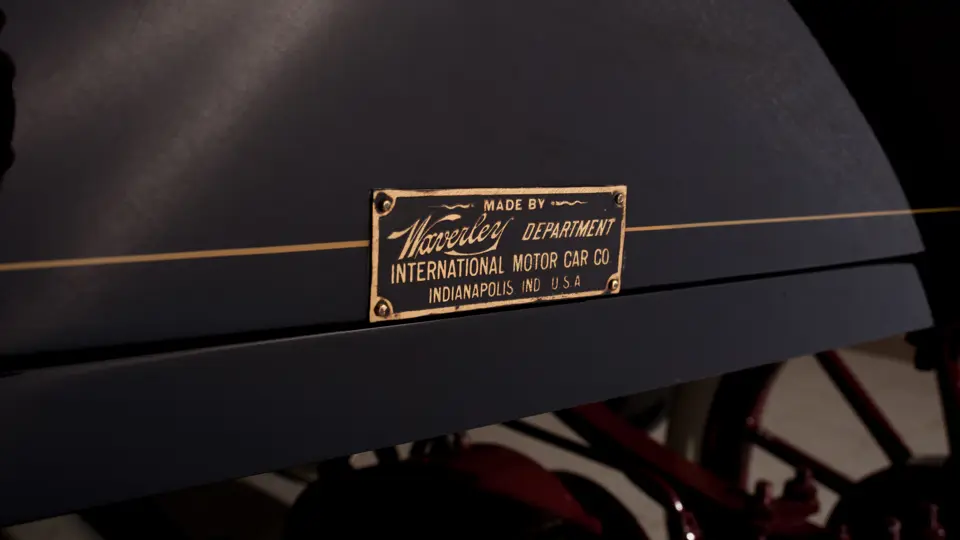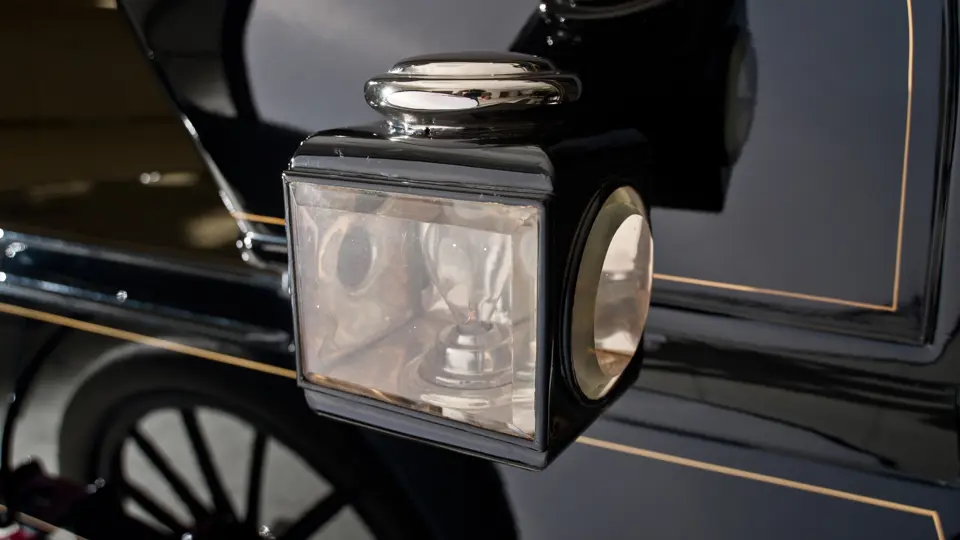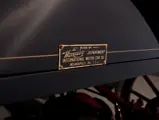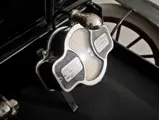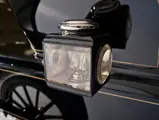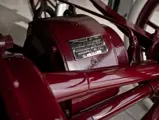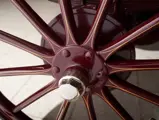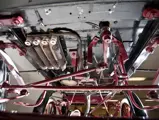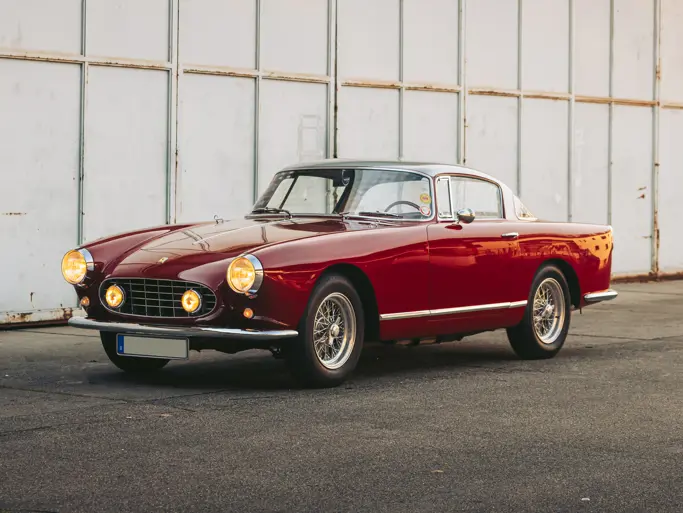Model 20a. Twin three hp DC motors with additional overload capacity of three hp each, solid front and live rear axles with semi-elliptic leaf springs, and electric brake and two-wheel mechanical brakes. Wheelbase: 70"
• Offered from the Estate of John O’Quinn
• Ex-Cedar Crossing and John McMullen Collections
• One of the most successful early electric vehicles
In 1898, the American Electric Vehicle Company of Chicago merged with the Indiana Bicycle Company in Indianapolis, Indiana, part of Colonel Albert Pope’s cycle empire. The Waverley Electric was introduced that year under the auspices of the American Bicycle Company, another of Pope’s entities. Between 1901 and 1903, the vehicles were manufactured by the Waverley Department of the International Motor Car Company. A famous early owner was none other than General Lew Wallace, the author of the epic Ben Hur.
During the Pope years, which lasted until 1908 when the Indianapolis factory was sold to a group of investors, the Waverley Electric line quickly developed from the basic Runabout, Road Wagon and Surrey into a plethora of models suited to many buyer types. Marketing was clearly aimed at lady owner-drivers, who appreciated the Waverley Electric’s many attributes including their ease of operation, reliability and readiness for use. Waverley Electric cars were featured in Ladies’ Home Journal articles, and as contemporary advertisements proclaimed, “Friends who own Electrics go around in comfort and luxury without soiling their hands, gloves, clothing and without fuss or noise.” Perhaps another 1903 advertisement said it best: “No complications. Turn on power and steer.”
Formerly owned by noted collectors from Michigan including Mr. John McMullen and the Cedar Crossing electric vehicle collection of Mr. James Cousens, this 1903 Waverley Electric Surrey is now offered from the large and diverse private collection it most recently joined in February 2008. An older but presentable restoration, it appears to be complete and correctly presented overall, with the exception of the required 40-cell, 80-volt battery arrangement, which is not present with the car. Nonetheless, it remains a fascinating example of an early electric car, the likes of which few collections around the world can claim to own.
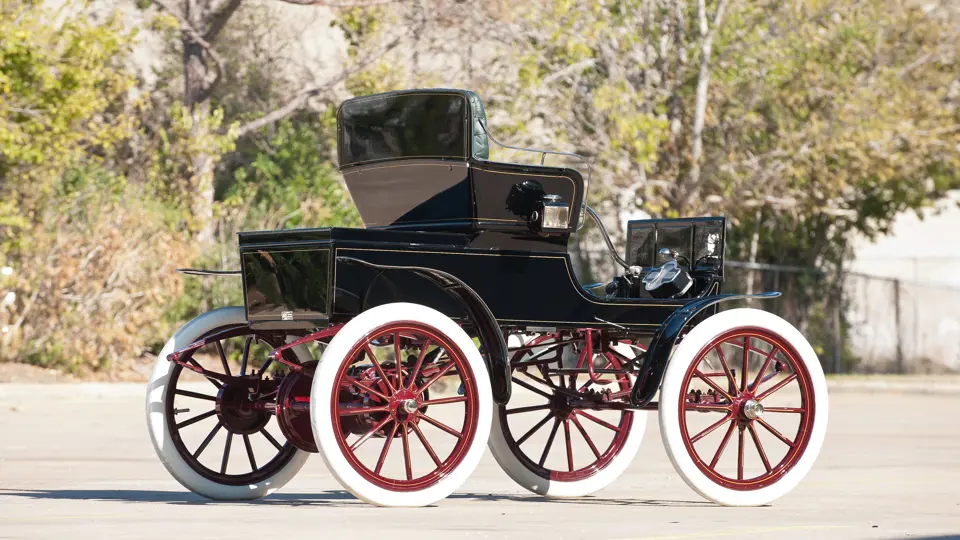
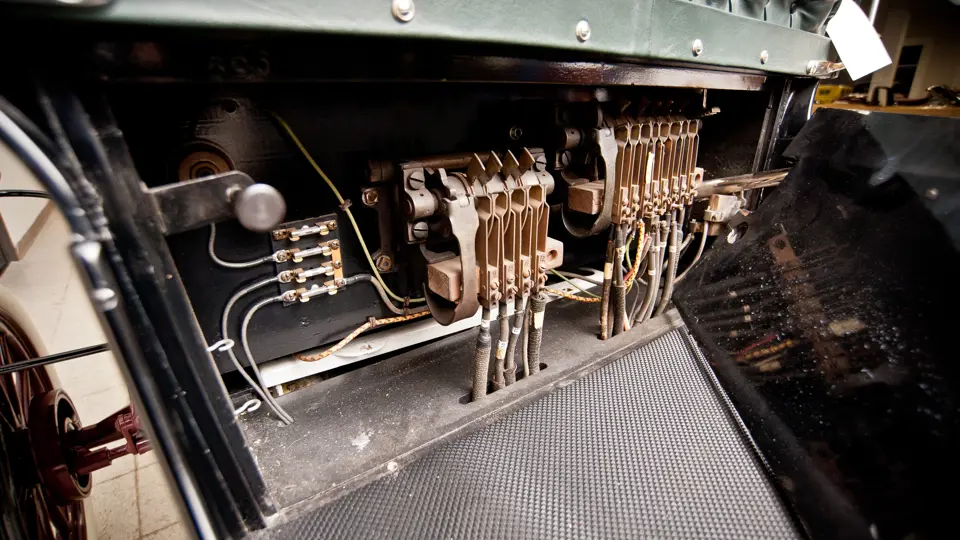


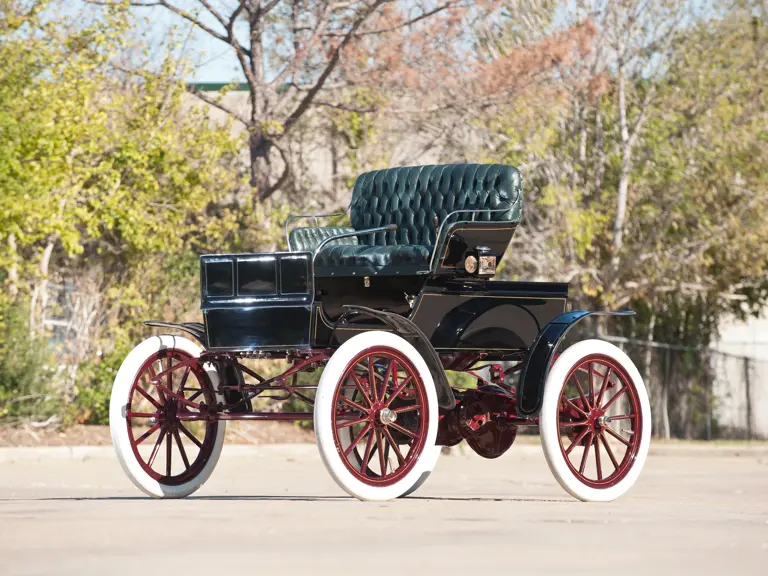
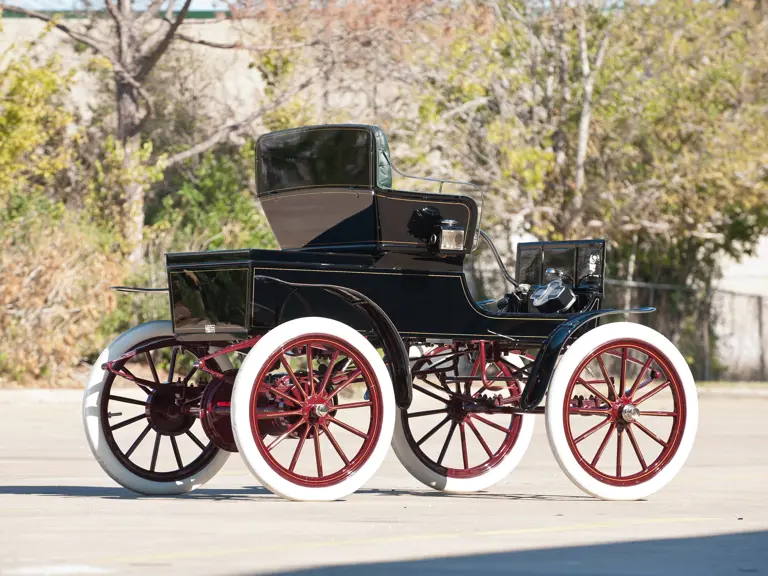
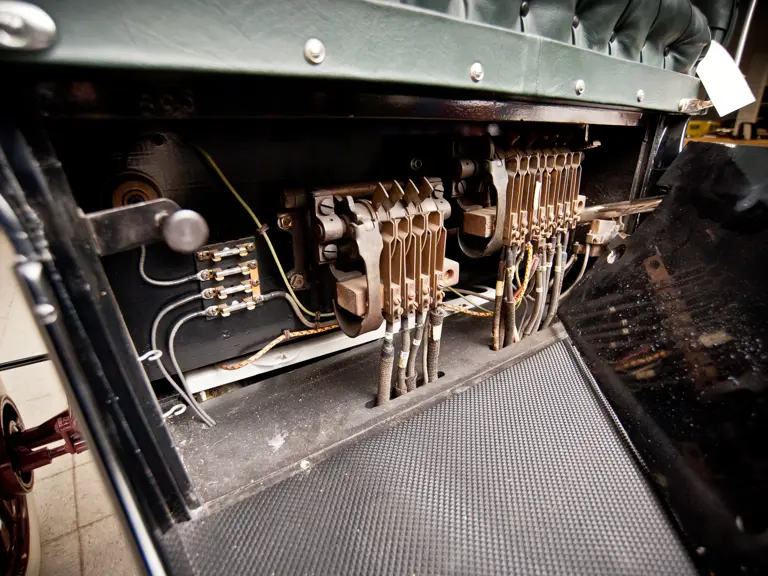
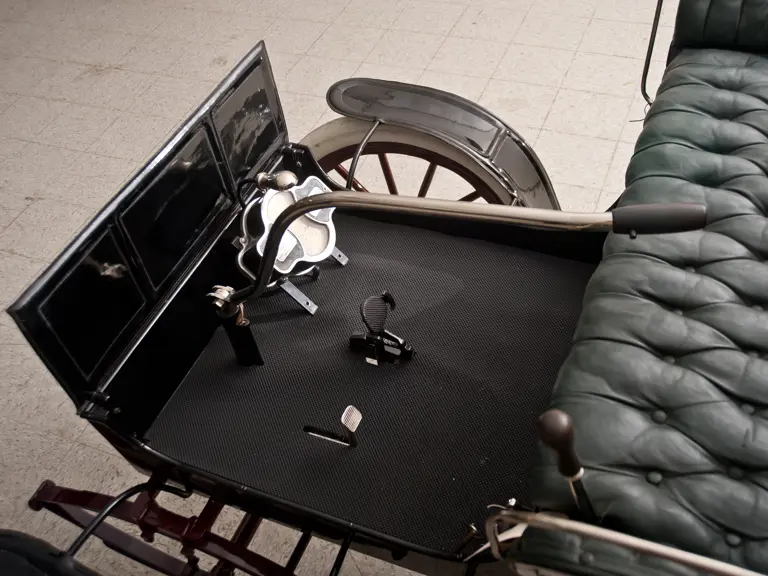
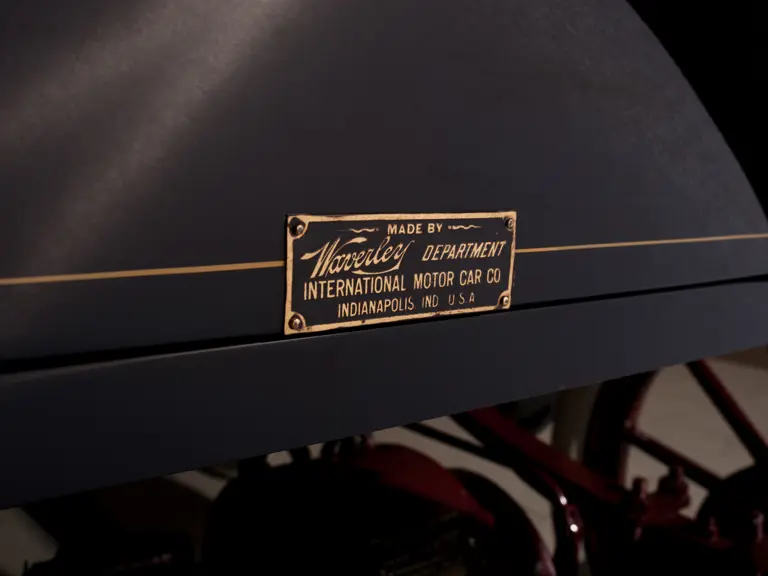
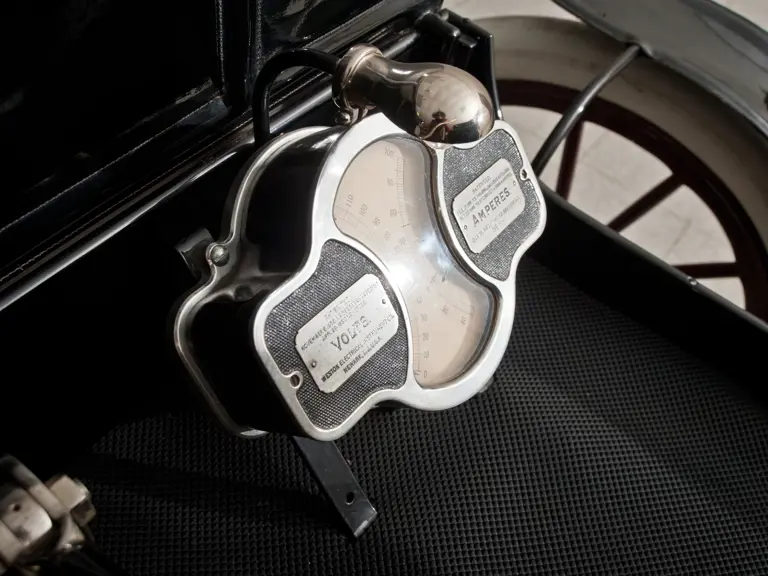

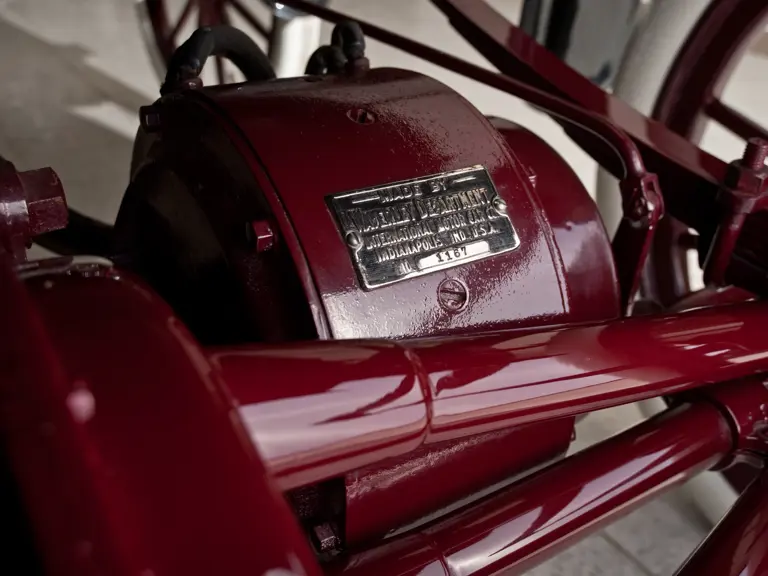

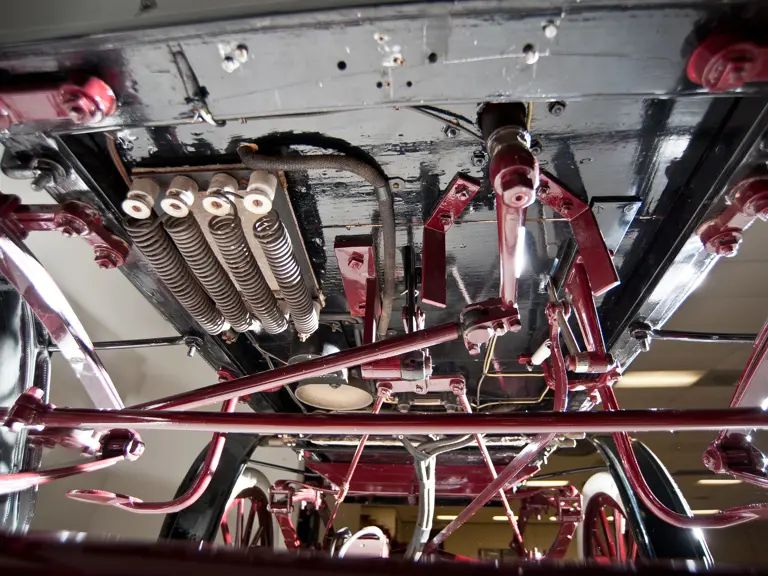
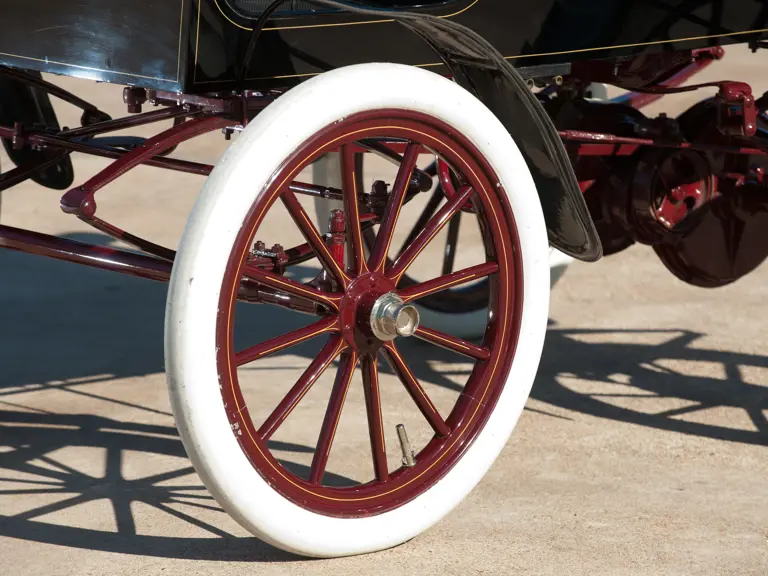

 | Phoenix, Arizona
| Phoenix, Arizona
